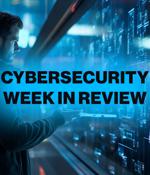Security News

93% of organizations made policy changes over the preceding 12 months to address concerns about increased personal liability for CISOs, according to Fastly. This includes two in five organizations...

Cyber threats in 2025 require a proactive, adaptive approach. To stay ahead, CISOs must balance technical defenses, regulatory expectations, and human factors. By prioritizing AI-driven security,...

The adoption of connected medical devices, collectively called the Internet of Medical Things (IoMT), has transformed patient care. However, this technological advancement has also introduced...

Cybersecurity is a high-stakes, high-pressure field in which CISOs and their teams constantly battle threats, compliance requirements, and business expectations. The demand for 24/7 vigilance,...

CISOs face mounting pressure to spend wisely on security. Yet, many organizations remain vulnerable due to misplaced priorities and inefficient budgeting. This article explores common pitfalls and...

Here’s an overview of some of last week’s most interesting news, articles, interviews and videos: How QR code attacks work and how to protect yourself While QR codes are convenient, they also...

Discover essential reads for CISOs in this curated list of books covering cybersecurity leadership, risk management, zero trust, board communication, and more. Why CISOs Fail, 2nd Edition Author:...

Virtual Chief Information Security Officer (vCISO) services are in high demand. Even though it is clear to all that this trend is growing, most service providers only offer a portion of overall...

The dynamic between CISOs and CIOs has always been complex. While both roles are essential to an organization’s success, their priorities often put them at odds. The CIO focuses on IT efficiency,...

CISOs are constantly navigating the challenge of protecting their organizations while ensuring business agility and innovation. For example, as companies move workloads to the cloud to support...